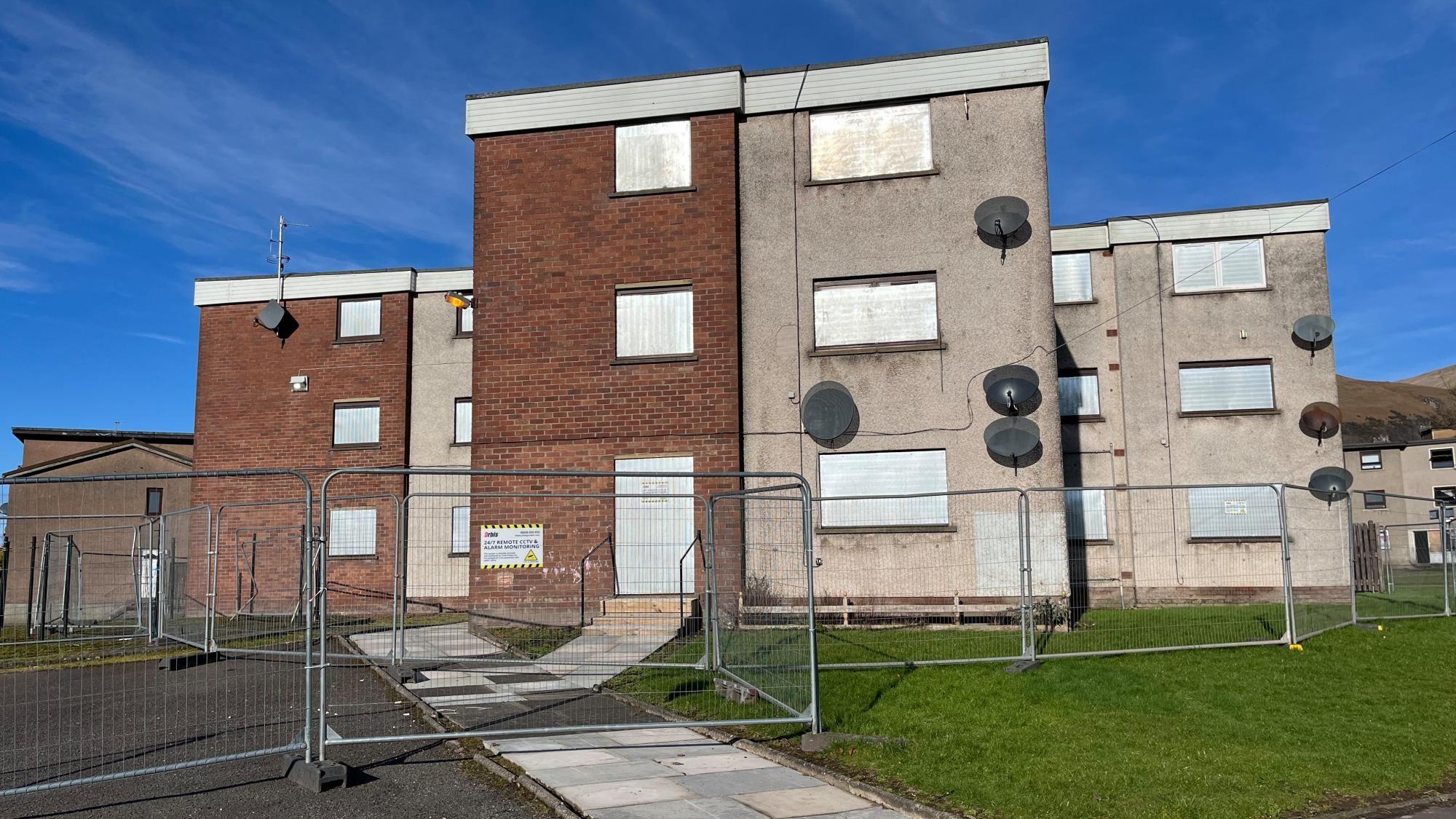
RAAC RESIDENTS ANGERED AFTER EVACUATION
Homeowners in Clackmannanshire whose flats were evacuated almost a year ago have told BBC Scotland News of their anger at the way have been treated.
The evacuation followed the discovery of RAAC - a cheaper type of concrete which is at risk of collapse.
Three blocks in Tillicoultry remain sealed off with Clackmannanshire Council still to make any decision on their future.
The council said work to consider the options for the RAAC evacuated properties continued adding that they would be put forward to councillors as soon as possible.
A group of residents met their new MP on Saturday morning to set out their concerns.
Homeowner Lynsey McQuater said she had lived in her flat for 23 years before she was evacuated.
She said it now felt like she had lost everything.
She had invested a lot of money in her property, and some of her possessions were stuck inside the block.
Before being evacuated, she did not realise there was RAAC in the building.
Last October, the council put letters through residents' doors to say they were carrying out work on the property regarding RAAC.
Three hours later, police evacuated all the residents but Ms McQuater did not know why - she wondered if there had been a flood and did not realise it was due to RAAC.
Ms McQuater has been staying with her mother since last October as she cannot afford to pay her mortgage and rent a property too.
"I would like a fair deal for my home, I would like a price for it so I could start again somewhere else," she said.
She added that there was no way she would get another mortgage due to her age - 50 - and having a chronic health condition.
'This is a scandal'
She said a councillor told her Clackmannanshire Council did not see homeowners as their responsibility.
The block of flats could be demolished, with a new block erected on the current site.
The thought of her home being demolished makes her feel angry and sad, she said, adding that she was "living in a nightmare".
"It's time the Scottish government stepped in - this is a scandal and we're the victims of it," she said.
Building safety is the responsibility of the Scottish government.
However, Housing Minister Paul McLennan has previously said he wanted the UK government to step in with support as it was “hard to say” what his government could offer.
The UK government said it wanted to work constructively with the Scottish government, adding that all building owners had a duty to manage building safety and performance risks of all kinds, and take action where they deem necessary.
Ten of the 27 flats in Tillicoultry are privately owned.
Some of those owners have joined the UK RAAC Campaign Group which has submitted a petition to the Scottish Parliament calling for a national budget to address RAAC-related housing issues around Scotland.
The group is also planning to hold a protest outside Holyrood when MSPs return in September.
Clackmannanshire Council said it recognised that it was a worrying time for those concerned and confirmed communication with those affected by RAAC was ongoing.
“We will continue to provide appropriate support and updates where available to those directly affected," it said.
“Officers are currently preparing an update for councillors, which will be shared with the local stakeholder group, and a further paper, to consider the future of the RAAC evacuated properties, will be brought to council as soon as is possible."
In Aberdeen, hundreds of homes blighted by RAAC are to be demolished and rebuilt at an expected cost of more than £150m.
The concrete has also been identified in homes in West Lothian.
The substance has also been found in school and NHS buildings around the country.
What is RAAC?
RAAC stands for reinforced autoclaved aerated concrete is a lightweight material that was used mostly in flat roofing, but also in floors and walls, between the 1950s and 1990s.
It is a cheaper alternative to standard concrete, is quicker to produce and easier to install.
It is aerated, or "bubbly" - like an Aero chocolate bar.
But it is less durable and has a lifespan of about 30 years.
Its structural behaviour differs significantly from traditional reinforced concrete.
Moreover, it is susceptible to structural failure when exposed to moisture. The bubbles can allow water to enter the material.
If that happens, any rebar reinforcing RAAC can also decay, rust and weaken.
Because of this, RAAC is often coated with another material, such as bitumen on roofing panels. But this material can also degrade.
The Health and Safety Executive says RAAC is now beyond its lifespan and may "collapse with little or no notice".
2024-08-24T12:56:42Z dg43tfdfdgfd